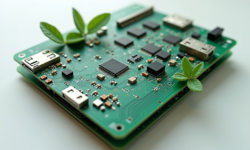Rainin Pipette Calibration Order Form ⏬⏬
Welcome to Rainin Pipette’s Calibration Order Form, your essential tool for ensuring accurate and precise pipetting in your laboratory. Our user-friendly form streamlines the process of submitting calibration requests, allowing you to maintain the reliability and integrity of your pipettes effortlessly. With our expert calibration services, you can trust that your pipettes will be meticulously tested, adjusted, and certified to meet the highest industry standards. Say goodbye to manual paperwork and embrace the convenience of our online order form, designed to optimize efficiency and minimize downtime. Experience the peace of mind that comes with knowing your pipettes are calibrated with utmost precision by industry-leading professionals.
Rainin Pipette Calibration
Calibration of Rainin pipettes is a crucial process in ensuring accurate and precise liquid handling. Rainin is a renowned manufacturer of high-quality pipettes used in various scientific and laboratory applications.
To maintain the reliability of measurements, regular calibration of Rainin pipettes is necessary. Calibration verifies the accuracy of the pipette’s volume delivery and ensures consistent results across experiments or analyses.
The calibration process typically involves the following steps:
- Preparation: Gather the necessary equipment for calibration, such as calibrated balances, reference standards, and suitable calibration solutions.
- Inspection: Examine the pipette for any visible damage or contamination. Ensure that all parts are clean and in proper working condition.
- Adjustment: If the pipette requires adjustment, follow the manufacturer’s instructions to fine-tune the volume settings. This step helps correct any deviations from the desired volume delivery.
- Calibration procedure: Perform the calibration using the chosen calibration method. This may involve gravimetric or photometric techniques, depending on the pipette model and accuracy requirements.
- Data recording: Record all relevant information during the calibration process, including the date, technician’s name, calibration values, and any observations made.
- Certification: After completing the calibration, issue a calibration certificate that serves as documentation for compliance and quality assurance purposes.
Regular recalibration is essential to ensure the ongoing accuracy and precision of Rainin pipettes. It is recommended to adhere to a calibration schedule based on frequency of use, industry regulations, and best practices.
By following proper calibration procedures, scientists and technicians can rely on Rainin pipettes to deliver precise volumes, contributing to the accuracy and reproducibility of experimental results in various scientific disciplines.
Pipette Calibration Order Form
| Pipette Calibration Order Form | |
|---|---|
| Customer Information: | |
| Name: | |
| Company: | |
| Address: | |
| Contact Number: | |
| Email: | |
| Pipette Information: | |
| Pipette Model: | |
| Pipette Serial Number: | |
| Calibration Due Date: | |
| Additional Details: | |
| Special Instructions: | |
| Preferred Delivery Date: | |
Please fill out the above form with your accurate customer information, pipette details, and any additional instructions or preferences you may have. Ensure that all required fields are filled in correctly to avoid any delays in processing your pipette calibration order.
Once the form is complete, submit it to our designated email address or contact our customer service department for further assistance. Our team will promptly process your order and coordinate the calibration of your pipette according to the provided information. We aim to deliver accurate and reliable calibration services to ensure the optimal performance of your pipette.
Thank you for choosing our pipette calibration services. We look forward to serving you with our professional expertise and commitment to quality.
Pipette Calibration Services
Pipette calibration services play a crucial role in maintaining the accuracy and reliability of pipettes, which are essential laboratory tools used for precise liquid measurement. These services involve the evaluation, adjustment, and verification of pipettes to ensure they adhere to recognized standards and deliver accurate results.
When it comes to scientific research, pharmaceutical testing, or any other laboratory work that requires precise volume measurements, pipettes must be calibrated regularly. Calibration ensures that the pipettes are functioning within acceptable tolerances, minimizing potential errors and ensuring the validity of experimental data.
The calibration process typically involves measuring the pipette’s performance at various volumes using reference standards and comparing the obtained values with established criteria. This assessment helps identify any deviations, such as inaccurate dispensing or erratic volume delivery, allowing for necessary adjustments or repairs.
Professional pipette calibration services are carried out by trained personnel or accredited calibration laboratories equipped with specialized tools and standards. These experts follow standard operating procedures to ensure consistent and reliable calibration results. Additionally, some service providers offer traceable calibration certificates, which document the calibration procedure and enable users to demonstrate compliance with quality management systems or regulatory requirements.
Regular calibration not only ensures the accuracy of pipettes but also extends their lifespan by identifying potential issues early on. By adhering to a calibration schedule, laboratories can minimize uncertainties and maintain the integrity of their research or testing processes.
Calibrating Rainin Pipettes
Rainin pipettes are precision instruments commonly used in laboratory settings for accurate liquid handling. Regular calibration of these pipettes is essential to ensure reliable and precise measurements. Calibration involves adjusting the pipette to match a known reference volume, thereby maintaining accuracy and performance.
The following steps outline the process of calibrating Rainin pipettes:
- Gather the necessary equipment: Prepare the required items for calibration, including a calibration standard, calibrated balance, distilled water, and clean lint-free wipes.
- Preparation: Ensure that the pipette is clean and free from any residue. Check for any visible damage or wear that may affect its performance. Keep the calibration standard at room temperature before starting the calibration process.
- Zero setting: Set the pipette’s volume to zero by rotating the plunger to its lowest position. This ensures accurate calibration readings.
- Aspiration: Immerse the pipette tip into the calibration standard liquid and carefully aspirate the desired volume. Ensure that the tip is completely submerged and there are no air bubbles trapped inside.
- Dispensing: Transfer the liquid to a weighing container placed on the calibrated balance. Gently press the plunger to dispense the liquid while keeping the tip immersed to prevent any loss. Record the weight displayed on the balance.
- Adjustment: Compare the measured weight with the expected weight for the calibrated volume. If there is a significant variation, consult the manufacturer’s instructions for adjusting the pipette accordingly.
- Verification: Repeat the aspiration and dispensing process with multiple volumes across the pipette’s range. Compare the measured weights with the expected values to ensure consistent accuracy.
- Documentation: Record the calibration results, including the date, technician’s name, pipette serial number, and any adjustments made. This documentation serves as a reference for future calibration cycles.
Regular calibration of Rainin pipettes is crucial for maintaining accurate and reliable measurements in laboratory experiments. It is recommended to follow the manufacturer’s guidelines and consult a qualified professional if you encounter any issues during the calibration process.
Rainin Pipette Calibration Procedure
Rainin pipettes are commonly used in laboratories for accurate liquid handling. To ensure reliable and precise measurements, regular calibration of these pipettes is essential. The calibration procedure involves several steps to verify the accuracy and precision of the pipette’s volume delivery.
The following is a general outline of the Rainin pipette calibration procedure:
- Preparation: Gather the necessary equipment, including calibrated weights or reference solutions, a balance, and suitable containers.
- Visual Inspection: Examine the pipette for any signs of damage or contamination. Ensure that it is clean and free from debris.
- Zero Setting: Set the pipette to its zero position by fully depressing and releasing the plunger while holding the pipette vertically.
- Calibration Points: Select appropriate calibration points based on the pipette’s volume range. Typically, three points (low, medium, and high volumes) are chosen.
- Weighing Method: For each calibration point, aspirate the specified volume of distilled water and dispense it into a weighed container. Weigh the container before and after dispensing to determine the actual volume delivered. Repeat this process multiple times.
- Data Analysis: Calculate the mean, standard deviation, and coefficient of variation for each calibration point. Compare the measured values with the expected values to assess the pipette’s accuracy and precision.
- Adjustment: If significant deviations are detected, consult the manufacturer’s guidelines or contact their technical support for appropriate adjustment procedures. It may involve adjusting the calibration screw or sending the pipette for servicing.
- Documentation: Record all calibration data, including the pipette’s identification, calibration points, measured volumes, and any adjustments made. Maintain accurate records for future reference and quality control purposes.
Regular calibration of Rainin pipettes ensures that they provide reliable and accurate results in various laboratory applications. It is recommended to follow the manufacturer’s instructions and seek professional assistance whenever necessary for proper pipette calibration.
Rainin Pipette Calibration Cost
Rainin pipettes are precision laboratory instruments used for accurate liquid handling in various scientific and medical applications. To ensure reliable and precise measurements, regular calibration of Rainin pipettes is essential.
The cost of Rainin pipette calibration can vary depending on several factors:
- Service Provider: The cost may differ among different service providers or calibration laboratories. It is advisable to choose a reputable and accredited provider for accurate calibration.
- Pipette Types: Rainin offers a range of pipettes with different features and specifications. The calibration cost may vary based on the complexity and number of pipette models requiring calibration.
- Calibration Frequency: The frequency of calibration can impact the overall cost. More frequent calibrations may incur additional expenses compared to less frequent ones.
- Volume Range: Pipettes come in various volume ranges, from microliters to milliliters. The cost of calibration might be influenced by the range of volumes being calibrated.
It is important to note that while calibration costs may add to the maintenance budget for Rainin pipettes, they are necessary for ensuring accuracy, reliability, and compliance with industry standards. Regular recalibration helps maintain the quality and performance of the pipettes, reducing the risk of incorrect measurements and potential experimental errors.
To obtain specific information about the current Rainin pipette calibration costs, it is recommended to reach out directly to Rainin or authorized service providers to get accurate and up-to-date pricing details.
Pipette Calibration Requirements
Calibration is a crucial process in maintaining the accuracy and precision of pipettes, which are essential tools used in laboratory settings for measuring and transferring liquids. Proper calibration ensures that pipettes deliver accurate volumes and minimizes the risk of errors in scientific experiments or testing procedures.
When it comes to pipette calibration requirements, several factors need to be considered:
- Regular Calibration: Pipettes should be calibrated at regular intervals to ensure their ongoing accuracy. The frequency of calibration depends on factors such as the pipette’s frequency of use, manufacturer recommendations, and regulatory requirements.
- Traceability: Calibration should be performed using certified reference materials and methods that provide traceability to national or international standards. This helps establish a chain of measurement accuracy and ensures comparability of results across different laboratories.
- Calibration Procedure: A proper calibration procedure involves verifying the pipette’s performance at various volume settings. This includes checking accuracy, precision, repeatability, and linearity. The specific steps may vary depending on the type of pipette and calibration equipment used.
- Qualified Personnel: Calibration should be carried out by trained and competent personnel who have the necessary knowledge and skills to perform the procedure correctly. They should follow established protocols, document the results accurately, and address any deviations or issues promptly.
- Documentation: Detailed records of each pipette’s calibration history should be maintained. This includes information such as the date of calibration, personnel involved, calibration results, adjustments made (if any), and any other relevant observations or notes.
Adhering to these pipette calibration requirements helps ensure the reliability and accuracy of measurements in laboratory settings. It is essential for maintaining the quality of scientific research, data integrity, and compliance with regulatory standards.
Rainin Pipette Calibration Company
Rainin Pipette Calibration Company is a renowned provider of calibration services for pipettes used in various scientific and laboratory applications. With a strong reputation in the industry, Rainin Pipette Calibration offers accurate and reliable calibration services to ensure the precision and reliability of pipettes used in research, diagnostics, pharmaceuticals, and other scientific fields.
The company specializes in calibrating different types of pipettes, including single-channel and multi-channel pipettes, as well as electronic and manual models. Through meticulous calibration procedures, Rainin Pipette Calibration ensures that pipettes are calibrated to meet the highest standards and accuracy requirements set by regulatory bodies, such as ISO 17025.
At Rainin Pipette Calibration, a team of highly skilled technicians performs calibration using state-of-the-art equipment and techniques. They meticulously inspect and calibrate each pipette, adjusting it to achieve optimal performance and accuracy. The calibration process involves evaluating factors such as volume accuracy, precision, and linearity to ensure that the pipette delivers precise and consistent results.
By partnering with Rainin Pipette Calibration, laboratories and research facilities can benefit from the expertise of a trusted calibration service provider. Regular calibration of pipettes is crucial to maintain data integrity, improve experimental accuracy, and comply with quality assurance standards. Rainin Pipette Calibration’s commitment to excellence and accuracy makes them a preferred choice for many scientists and researchers worldwide.
In addition to calibration services, Rainin Pipette Calibration also offers comprehensive maintenance and repair solutions to address any issues or malfunctions that may arise with pipettes. Their experienced technicians can diagnose problems, perform necessary repairs, and ensure that pipettes are functioning optimally.
Overall, Rainin Pipette Calibration Company plays a vital role in ensuring the reliability and accuracy of pipettes used in scientific research and laboratory settings. With their commitment to precision and their extensive expertise in calibration services, they continue to provide invaluable support to scientists, researchers, and professionals in various fields.
Pipette Calibration Services Near Me
Pipettes are essential tools used in laboratories and research facilities for accurate measurement and dispensing of liquids. To maintain their precision and reliability, regular calibration is crucial. If you are searching for pipette calibration services near your location, it is important to find a reputable provider that can ensure accurate results.
When looking for pipette calibration services, consider the following:
- Accreditation: Choose a calibration service provider that holds accreditation from recognized organizations such as ISO/IEC 17025. This ensures that they follow standardized procedures and maintain high-quality standards.
- Experience and Expertise: Look for a company with extensive experience in calibrating pipettes. They should have knowledgeable technicians who understand the intricacies of various pipette models and can perform calibrations accurately.
- Traceability: Ensure that the calibration provider offers traceable certificates. Traceability allows you to track the calibration process back to national or international standards, providing confidence in the accuracy of the calibration.
- Turnaround Time: Consider the turnaround time offered by the calibration service. It is important to minimize downtime and ensure your pipettes are returned promptly.
- Additional Services: Some calibration providers may offer additional services such as repair, maintenance, and instrument validation. It can be beneficial to choose a provider that can address all your pipette-related needs.
Pipette Calibration Standards
Pipette calibration standards are essential tools used in laboratories to ensure the accuracy and precision of pipettes, which are commonly used for measuring and transferring liquids. Calibration standards provide a reference point against which the performance of pipettes can be evaluated and adjusted if necessary.
The calibration process involves comparing the volume dispensed by a pipette with the known volume of the calibration standard. This allows for the identification of any deviations or inaccuracies in the pipette’s performance. Calibration standards are typically solutions with precisely measured volumes, traceable to national or international measurement standards.
There are different types of calibration standards available, including gravimetric and volumetric methods. Gravimetric calibration involves weighing the liquid dispensed by the pipette, while volumetric calibration relies on the use of volumetric glassware with accurately marked volumes.
Regular calibration of pipettes is essential to maintain the quality and reliability of laboratory results. It helps ensure that measurements are accurate, which is crucial for experiments, research, quality control processes, and various scientific applications. Calibration also helps identify any systematic errors in pipette performance, allowing for adjustments or necessary repairs.
In addition to calibration standards, it is important to follow proper pipetting techniques and handle pipettes with care to minimize potential errors and maintain their accuracy. Maintaining a regular calibration schedule and using high-quality calibration standards contribute to reliable and precise pipetting results in the laboratory.



